Review: Kyocera Rise for Sprint
Aug 31, 2012, 10:22 AM by Eric M. Zeman

For the smartphone lover who still longs for the physical touch of real keys, the Kyocera Rise rises to the challenge with its real QWERTY keyboard. Stock Android 4.0 Ice Cream Sandwich? Well, that's just the icing on the cake.
Form
Is It Your Type?

Kyocera's latest effort for Sprint is the Rise, an inexpensive sideways slider that ships with Android 4.0 Ice Cream Sandwich. For the messaging-minded user, the Rise is a tempting text machine.
Body
Kyocera's phones are rarely the eye-catching kit that gleams on store shelves, and the Rise doesn't do anything to help bolster Kyocera's design chops. It is a blocky, chunky device with a spartan design that lacks any sort of luster. Or, if we're being nice, it's a form-over-function kinda smartphone. That's not to say that the hardware doesn't have some strong points.
The Rise might have a black front, but the sides and back are mostly a dark shade of gray that's glossy and reflective enough to signal a rescue helicopter should the need ever arise. It may be chunky, but it is also compact. The Motorola Photon Q, for example, had a much larger footprint. The Rise feels comfortable against your palm thanks to the curved surfaces and smooth plastic of the battery cover. It is easy to wrap your hand all the way around it and the weight is just right. It is not too light as to feel cheap, nor too heavy as to cause fatigue when using it. It'll slip into most any pocket like greased lightning.
The display has more bezel around it than I'd care to see. It looks small thanks to the thick black frame in which it is set. Though the Rise runs Android 4.0, it has four capacitive buttons along the bottom: Back, Home, Multitask, and Menu. The Menu button icon is the same three little vertical dots that are used for on-screen menu buttons in Android 4.0, which helps train new users of Android 4.0. The capacitive buttons are responsive and work well.
The volume toggle, positioned on the left, is no problem to find and works really well. The micro-USB port is below it. Surprisingly, there is a dedicated camera button on the right side of the Rise. It has good travel and feedback. The power/lock button on the top of the phone is excellent. It has a very good feel to it, and is the easiest button on the phone to find. There is a 3.5mm headset jack next to it.
The slider mechanism feels fantastic. There's plenty of spring assistance and it snaps open and shut with authority, with but a little nudge from your fingers. When open, the Rise is comfortable to hold and use for messaging. It's well balanced and the relatively narrow shape of the keyboard necessitates fewer gymnastics on the part of your thumbs.
The keyboard is one of the best I've used from Kyocera. The buttons are well spaced, have a good shape that makes them easy to find, and the travel and feedback of the keys is perfect. Probably my only complaint is that the keyboard has four rows and not five. The numbers are reachable via the function key, and span the top row. The bottom row is reserved for the shift, function, symbol, and space bar buttons. It also has directional buttons for moving the cursor across the screen. There is a dedicated @ button, and a period button, but you have to hit the Symbol button to get any any other characters.
The battery cover peels off easily. It is very thin and flimsy. Be careful not to break it. The microSD card, which is buried in the edge of the phone, can be accessed without removing the battery.
Aside from the somewhat boring design, the Kyocera Rise has solid hardware that works well.
The Three S's
Screen
The Rise is a low-cost device and nowhere is it more obvious than the display. It measures 3.5-inches and offers just 320 x 480 pixels. Individual pixels are quite easy to see, and there's a definite low-rez haze visible along the ragged-y edges of pictures, icons, and such. The luminosity of the display is OK. Set to the highest level of brightness, it isn't as dazzling as today's best devices, but it is readable. Outside it fares poorly, I'm afraid. I found it nearly impossible to read or use when outdoors.
Signal
The Rise does a fine job attaching itself to Sprint's 3G network. It performed slightly better than the average Sprint phone would in the New York City area. Not only did it remain tightly connected to the network, it never dropped any calls, and always connected them on the first attempt. The Rise easily made calls even under the poorest network conditions. The data always worked, too, but browsing sessions slowed down dramatically in crummy coverage areas.
Sound
The Rise is an excellent voice phone. The majority of calls I made were crystal clear and had a pleasing timbre. I didn't notice any noise, choppiness, or other problems. Further, the earpiece is plenty loud. I easily heard conversations over the din of a noisy coffee shop and bustling restaurant. The speakerphone loses a bit of quality and a bit of volume, but I'd still rate it as very good. The speakerphone will work perfectly for use in offices or in cars if you need to share the conversation. Ringers and alert tones were decent, and the vibrate alert produced a significant vibration.
Battery
With a smaller display and no 4G on board, the Rise offered plenty of battery life. It lasted nearly two days on a single charge with average use (checking email, social networks, browsing, listening to music). Using Bluetooth and GPS for navigation were the only activities that took a noticeable toll on the Rise's battery life. The Rise also includes something called Eco Mode for fine-tuning power consumption (more on that later). Power users may want to charge every night, but if you forget, you won't be staring at a blank screen come morning.
Basics
Menus/Customization
The Kyocera Rise is a rare breed of smartphone: it runs stock Android 4.0 Ice Cream Sandwich with just a few Sprint-dictated options tossed in.
There is only one lock screen shortcut, and it opens the camera (the dedicated camera button only works when the phone is already awake). Otherwise, the only actions you can take from the lock screen are to silence or answer incoming calls.
The Rise has five home screen panels for customization, and Kyocera and Sprint have left them blank out of the box. This means you can approach the Rise like a fresh canvas and customize at will without first having to tear everything down.
The notification shade offers alerts and access to the settings menu. The main app menu is a series of grids, which cannot be customized (yes, seriously). Once you swipe past the last app menu page, you get to the widgets, of which there are plenty for littering across the home screen panels.
In terms of customization, the Rise offers the typical allotment of Ice Cream Sandwich features in addition to Sprint iD. Sprint iD is the one real non-stock item in the Rise's menu system. Sprint iD, which has been around for years, lets users download packages of wallpapers, apps, ringtones, and widgets that are centered on specific themes, such as NASCAR or RadioShack. They are a neat idea, but often come with bloatware. Given the complete lack of bloatware on the Rise, it seems it would be a shame to sully it with Sprint iD packs; but hey, if that's your thing, go for it.
Ah, performance. It is a bit lacking. The Rise has nary but a 1GHz Qualcomm Snapdragon S2 processor under the hood, and the device is slow as a result. It's not kill-me-now slow, but it's not going to light a fire under anyone's behind, either.
Communications
Calls
Pressing the phone button on the home screen brings you to the dialpad. You can swipe sideways to access the call log, and your favorite contacts. The call log provides some information about calls (time, duration) in addition to shortcuts for redialing or sending a text message to that number.
In-call actions are available via controls that appear on the bottom of the screen, You can easily bring back the dialpad, turn on the speakerphone, mute calls, or add a line.
Contacts
Contacts are automatically synced with your Google accounts. The contacts app grabs the Google+ profile data from your contacts who have Google+ accounts (images, links, videos, recent posts to Google+) and you can see that data in the contact cards.
The contact cards look clean and well organized. The information is easier to grasp right away and the tools for accessing, editing, sharing, and otherwise interacting with your contacts are all a cinch to manage.
Contact cards, direct dial, or direct message shortcuts can be placed on the home screens, which give you instant access to your pals. You can also add contacts to your Favorites list — which is visible in the phone application.
Last, the Rise has an entire section dedicated to your ICE — or "In Case of Emergency" — contacts. This little app lets you provide your own basic contact info and the phone numbers of a select few key contacts to those who you might want a stranger to call, should they find you in distress somewhere.
Messaging
The Rise doesn't include any messaging features beyond the stock Android tools. That means you get SMS/MMS, Gmail, email, Google Talk, Google+, Google+ Messenger, and voicemail. Facebook and Twitter are both absent, as is any sort of IM client for AIM, Windows Live, or Yahoo. Of course, feel free to grab those from the Google Play Store.
Extras
Media
Music
Google Play Music is the only music app preinstalled on the Rise. If you want anything beyond what Google offers through its own music app, you have to dig through the Google Play Store to find it. That said, the Google Play Music app is extensive in features and lets you stream music over the network or store it locally. It's my music app of choice.
Video
The same goes for video. The Google Play Movies app and associated store are both available, as is the native YouTube application. These are fine options for purchasing and playing video content, but if you prefer other options, again, they can be downloaded separately.
The Rise played both audio and video content that I sideloaded with no problem, and the quality was just fine.
Camera
Camera
The Rise uses the stock Android 4.0 camera. It can be opened from the lock screen thanks to the shortcut, or with a quick press of the camera button when the phone is unlocked. It opens fairly fast, but I've definitely seen faster.
All of the controls are bunched up on the right side of the viewfinder. By default, the viewfinder offers a slider for zooming in and out, but no other tool shortcuts. You have to press the settings button to get at the camera's more in-depth controls.
The camera controls allow you to adjust the color effects, and exposure; switch between several different scenes (portrait, scenery, etc.); set white balance; and toggle the flash.
The Rise doesn't have autofocus nor touch-to-focus, so it takes pictures fairly fast.
Photos
The Rise's camera takes crummy photos. Pictures max out at 3.2 megapixels. The lack of autofocus really hurts the results, as many of the images I took were soft and lacking clarity. Toss in an unhealthy amount of grain and the bulk of images are simply unusable. Some turned out well, those taken under a bright-and-sunny sky, for instance, but winning shots were few and far between.
Video
The video camera is limited to capturing 480p video. Videos I shot were as poor as the still images I captured. It's fine for snagging the kids soccer practice during the day, but anything that requires delicate light sensitivity will result in a grainy, awful mess. The Rise might come through in a pinch, but I'd rely on something else if you're looking to record something important.
Gallery
Again, the Rise uses the stock Android 4.0 tools when it comes to the gallery software. The central image library ties together all the photos associated with your Google accounts, including Picasa and Google+, and you can sync them to the device for offline access if you want.
When you dive into individual libraries, the images are arranged in vertical columns. Poke the image you want to manipulate and it loads in a jiffy. The image fills most of the screen, but there's a ribbon that stretches across the bottom so you can jump to other images in the library fairly quickly.
Up top, you'll see the sharing tool. You can also trash the image, or open the full menu to start a slideshow, edit the photo, etc.
Editing features include the ability to add effects, such as highlights, shadows, and so on; add filters such as fisheye effects; adjust colors and tones with sepia, B&W, etc. The last tool lets you crop the image, fix red-eye, adjust for face glow, straighten images, rotate or flip them, and sharpen them.
Browser/Extras
Apps
The Rise has barely any bloatware. In fact, aside from stock Google apps, all you'll find is Sprint Zone and Sprint iD. That's just awesome! Of course, both Sprint Zone and Sprint iD can be used to stuff tons of Sprint apps on your device should you so wish.
Bluetooth
Bluetooth worked perfectly on the Rise. The device connected to mono headphones, stereo headsets, other smartphones, and PCs without issue. Phone calls sent to my car's stereo system sounded very good, and music passed through stereo Bluetooth speakers sounded excellent.
Browser
The stock Android 4.0 browser is quite good. I find it works well and renders both full HTML and mobile-optimized sites nicely. It can be a little but pokey, though, when Sprint's network coverage isn't all that great. As I've noted in other reviews, the Chrome browser is a better option, as it syncs with the Chrome desktop browser and offers handy controls for managing multiple tabs.
Clock
When you press the screen lock key, the time is displayed in a pencil-thin font close to the top of the display. It's way too small, in my opinion. You also can't do anything to adjust its appearance. The home screen clock widget selection is pretty anemic, as well.
Eco Mode
The Rise offers a settings tool that allows users to control the power consumption of the device. It is called "Eco Mode." By default, Eco Mode is on. Basically, you can use the tool to adjust the device so that it is more eco friendly (i.e., uses less energy). How do you know it is more eco friendly? Eco Mode shows you how efficient your device is by using a scale of green leaves. The less power you're using, the more green leaves you rate. Make changes to the settings (i.e., amp up the brightness, or turn on all the radios, or set auto-sync to happen once per hour) and you lose green leaves. Losing leaves simply represents battery life you're losing, to help you conserve juice. It's much like the eco-guide display in certain hybrid cars.
GPS
Google Maps and its associated navigation features are the only apps on board for helping you get from A to B. Google Maps continues to be an excellent piece of software. Using it with the Rise's GPS radio worked out well for the most part. The GPS locked down my location within about 10 seconds, and was accurate to within about 50 feet. It could have been a little faster and a little more accurate, but it was good enough for most driving directions.
Wrap-Up
The Rise could have been a home run for Kyocera. Just a few failures keep it from being a really great phone.
The network, battery, and calling performance alone make the Rise worth recommending, but add in a very good keyboard and it's even better. I wish the design of the device were a bit more appealing, but in this case function truly does overrule form. Stock Android 4.0 was a pleasant surprise, and should make plenty of people who don't want a Nexus device happy.
Performance, however, suffers a bit thanks to the older, slower processor. The display pales in comparison to even other mid-range handsets. Last, the camera is unforgivably bad.
If you don't care all that much about the extras and really just want a solid smartphone that works well as a messaging device, the Rise is worth a look. It you want a smartphone that gets everything right, the Kyocera Rise doesn't fully rise to the occasion.

Comments
Just To Clarify...
Technically, this is not true; ICS allows the notification shade to be pulled down from the lock screen for quick and easy access to...well, notifications. It's an obscure addition that not a lot of people know about.
Low-end, not mid-range


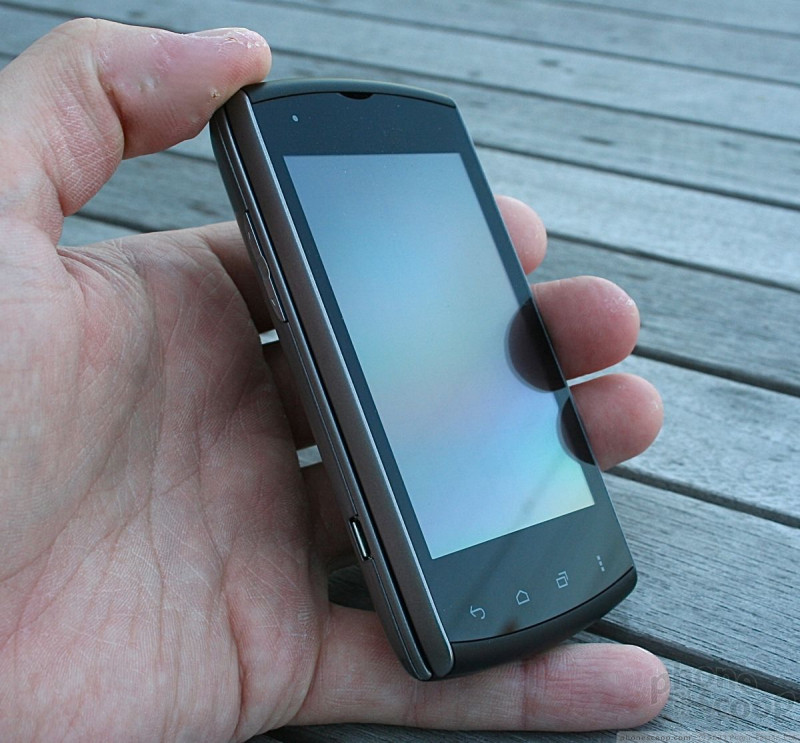









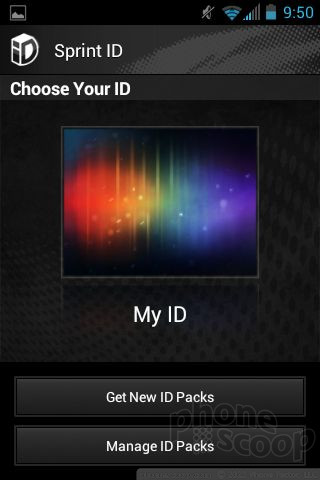




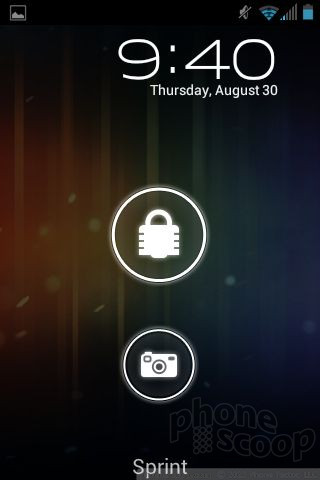






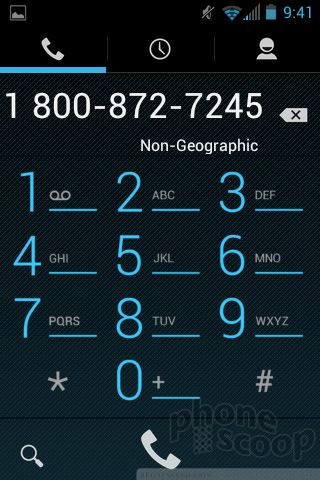























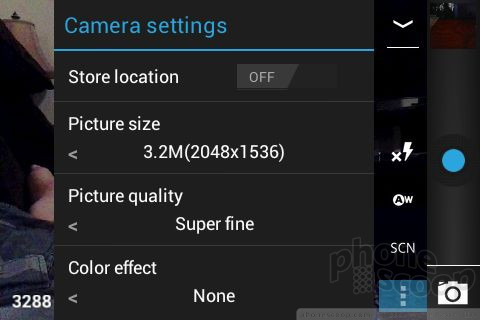















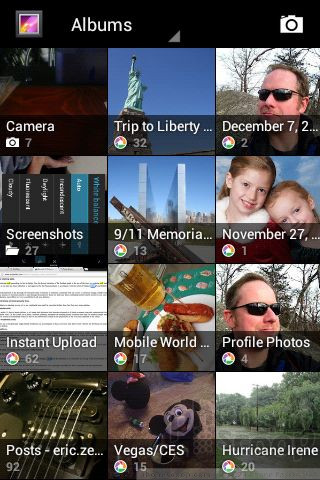






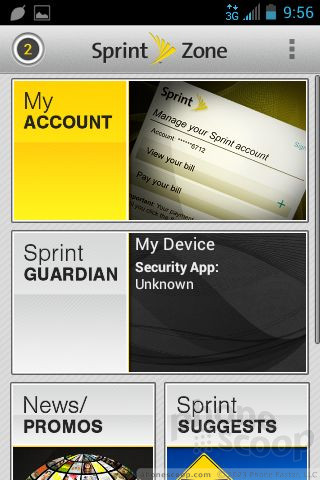



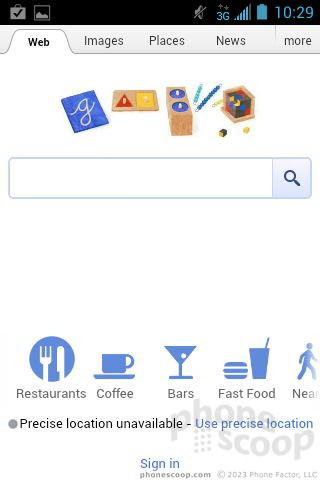




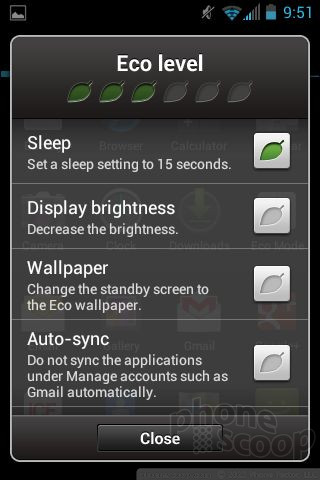



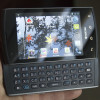 Hands-On with the Kyocera Rise
Hands-On with the Kyocera Rise
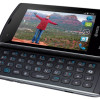 Kyocera's Rise QWERTY Phone Headed to Sprint and Virgin
Kyocera's Rise QWERTY Phone Headed to Sprint and Virgin
 Kyocera Rise
Kyocera Rise





